Camping
Are you ready to escape the hustle and bustle of everyday life and reconnect with nature? Camping is the perfect opportunity to do just that! Whether you prefer the rugged, primitive experience of tent camping in the backcountry or the convenience of car camping at a developed campsite, there's a camping adventure waiting for you.
There are many styles of camping from living off the land, to primitive campsites, to state parks, to KOAs and other private campgrounds. But where should you go? And how should you prepare? Don't worry, we've got you covered.
If you're okay roughing it a little, tent camping at primitive campsites might be for you. Primitive campsites don't have toilets or water. Usually the only thing that makes the spot identifiable as a campsite is rocks forming a fire ring, maybe a picnic table, and a possibly clear place to put a tent. There's often no fees associated with primitive campsites so it's usually first come, first serve. While spots such as this are usually found far away from the hustle and bustle of life, they're often in areas with high levels of ATV, UTV, SXS, and motorcycle activity. They may not always be the quietest spots but they're still great for getting away with your tent and fantastic places to boondock an RV.
On the other hand, car camping at a more developed state park campsite might be more your speed. State or federal park campgrounds usually greet you with an informative sign and paybox where you pay for your campsite. A camp host is usually somewhere nearby to help if you really need something and there is almost always some kind of bathroom facilites. The bathroom usually consists of a vault toilet but occassionally you'll find one with running water as well. Somewhere on the grounds, there is usually a spigot where you can fill up your potable water but always make sure before making that part of your plan. Official campgrounds often have a bear box meant to keep your food safe from bears or other wildlife that may be attracted to your food or other fragrances.
No matter which type of camping you choose, the key is to be prepared. Know what you can expect to find at the campsite. Pack the essentials, including a tent, sleeping bag, and cooking supplies. Don't forget to bring plenty of water, as well as food that is easy to store and prepare. And be sure to research the area you'll be camping in, so you know what to expect in terms of weather and potential hazards.
So why should you go camping? For starters, it's a great way to spend quality time with friends and family. It's also an excellent way to disconnect from technology and recharge your batteries. And let's not forget the amazing scenery and sense of accomplishment that comes with spending a night (or several) in the great outdoors.
So don't wait any longer – it's time to pack your bags and hit the trails (or the campsite)! Trust us, you won't regret it.
Here's some of our favorite campsites
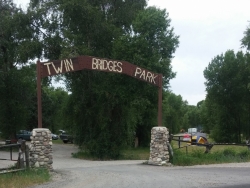
Twin Bridges Park
Rexburg, Idaho
10.5 miles S of Rexburg, IdahoTwin Bridges is a campground 12 miles South East of Rexburg on S. 600 E. It is maintained by Madison County Parks Department. It is a 27 acre park of pristine land rich with wildlife on the Snake...
Camp, Canoe 13.8 mi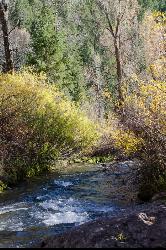
Big Elk Creek
Irwin, Idaho
11.0 miles SE of Irwin, IdahoBig Elk Creak Campground is a very versitile campground with plenty of activities to keep busy. Campgrounds are available, with three group sites that include picnic tables and campfire rings. There...
Backpack, Camp, Canoe, Hike, Horseback, Kayak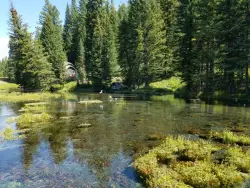
Big Springs
Island Park, Idaho
7.6 miles NE of Island Park, IdahoThere's also a great little walking trail along the river with placards that tell about the ecosystem and history of the area. There's about a 1/2 mile that's paved and then a 1/2 mile...
Camp, Hike 0.6-2.0 mi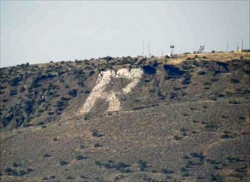
North Menan Butte ('R' Mountain)
Menan, Idaho
4.5 miles N of Menan, IdahoThe North Menan Butte is more commonly known to the locals and college students as R Mountain. Many kids know it better as Ou'R' Mountain. The butte is a rare and unique geological area and provides...
Camp, Cave, Hike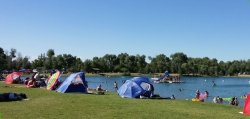
Jefferson County Lake (AKA Rigby Lake)
Rigby, Idaho
2.0 miles N of Rigby, IdahoRigby Lake has long been a favorite swimming hole for those in the area. The county has taken it well under its wing and made it a buzzing spot on any warm summer day. Along with the long standing...
Camp, Canoe, Dive, Kayak, Sled, Swim 3.8-6.4 mi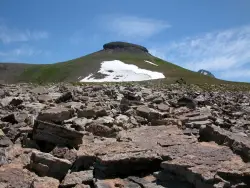
Table Rock / Table Mountain
Driggs, Idaho
10.0 miles E of Driggs, IdahoAt 11,300 feet, Table Mountain is possibly the most beautiful climb this side of the Tetons and offers what may well be the very best view of the Grand Tetons. It's just far enough away...
Camp, Hike 0.1-5.2 mi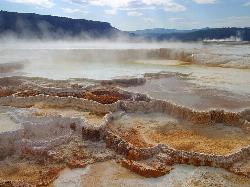
Mammoth Hot Springs
Mammoth, Yellowstone National Park
0.3 miles SW of Mammoth, Yellowstone National ParkMammoth Hot Springs is a unique sight in Yellowstone National Park. The soft limestone in this area allowed the water to form colorful terraces. The extremely hot running water is clear and smooth,...
Camp, Hike 0.6-3.7 mi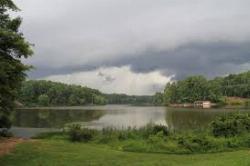
Umstead State Park
Raleigh, North Carolina
9.7 miles NW of Raleigh, North CarolinaPeople in North Carolina’s Triangle find respite in the natural haven that is William B. Umstead State Park. Umstead State Park is an impressive 5,579 acres of nature’s wonders in the...
Camp, Canoe, Hike, Horseback, Mountain Bike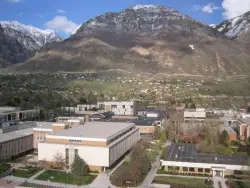
Y-Mountain Summit Trail
Provo, Utah
2.8 miles E of Provo, UtahY Mountain is located directly east of Brigham Young University (BYU) in Provo, Utah, United States. The Slide Canyon/Y Mountain Trail leads to a large block Y located 1.2 miles (1.9 km) from a...
Camp, Hike 0.1-0.5 mi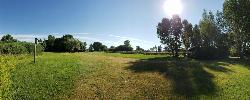
Eagle Park
Rexburg, Idaho
0.9 miles N of Rexburg, IdahoEagle Park is a little urban oasis. Once you drive in to this cottonwood forest along the river, you may forget that you're still inside Rexburg city limits. You can camp, picnic, throw rocks in...
Camp, Hike, Mountain Bike, Sled- Plan Ahead and Prepare. Know the regulations and special concerns for the area you'll visit. Prepare for extreme weather, hazards, and emergencies. Schedule your trip to avoid times of high use. Visit in small groups when possible. Consider splitting larger groups into smaller groups. Repackage food to minimize waste. Use a map and compass to eliminate the use of marking paint, rock cairns or flagging.
- Travel & camp on durable surfaces. Durable surfaces include established trails and campsites, rock, gravel, dry grasses or snow. Protect riparian areas by camping at least 200 feet from lakes and streams. Good campsites are found, not made. Altering a site is not necessary.
- Dispose of waste properly. Pack it in, pack it out. Inspect your campsite and rest areas for trash or spilled foods. Pack out all trash, leftover food and litter. Deposit solid human waste in catholes dug 6 to 8 inches deep, at least 200 feet from water, camp and trails. Cover and disguise the cathole when finished. Pack out toilet paper and hygiene products. To wash yourself or your dishes, carry water 200 feet away from streams or lakes and use small amounts of biodegradable soap. Scatter strained dishwater.
- Leave what you find. Preserve the past: examine, but do not touch cultural or historic structures and artifacts. Leave rocks, plants and other natural objects as you find them. Avoid introducing or transporting non-native species. Do not build structures, furniture, or dig trenches.
- Minimize campfire impacts. Campfires can cause lasting impacts to the environment. Use a lightweight stove for cooking and enjoy a candle lantern for light. Where fires are permitted, use established fire rings, fire pans, or mound fires. Keep fires small. Only use sticks from the ground that can be broken by hand. Burn all wood and coals to ash, put out campfires completely, then scatter cool ashes.
- Respect wildlife. Observe wildlife from a distance. Do not follow or approach them. Never feed animals. Feeding wildlife damages their health, alters natural behaviors, and exposes them to predators and other dangers. Protect wildlife and your food by storing rations and trash securely. Control pets at all times, or leave them at home. Avoid wildlife during sensitive times: mating, nesting, raising young, or winter.
- Be considerate of other visitors. Respect other visitors and protect the quality of their experience. Be courteous. Yield to other users on the trail. Step to the downhill side of the trail when encountering pack stock. Take breaks and camp away from trails and other visitors. Let nature's sounds prevail. Avoid loud voices and noises.

















